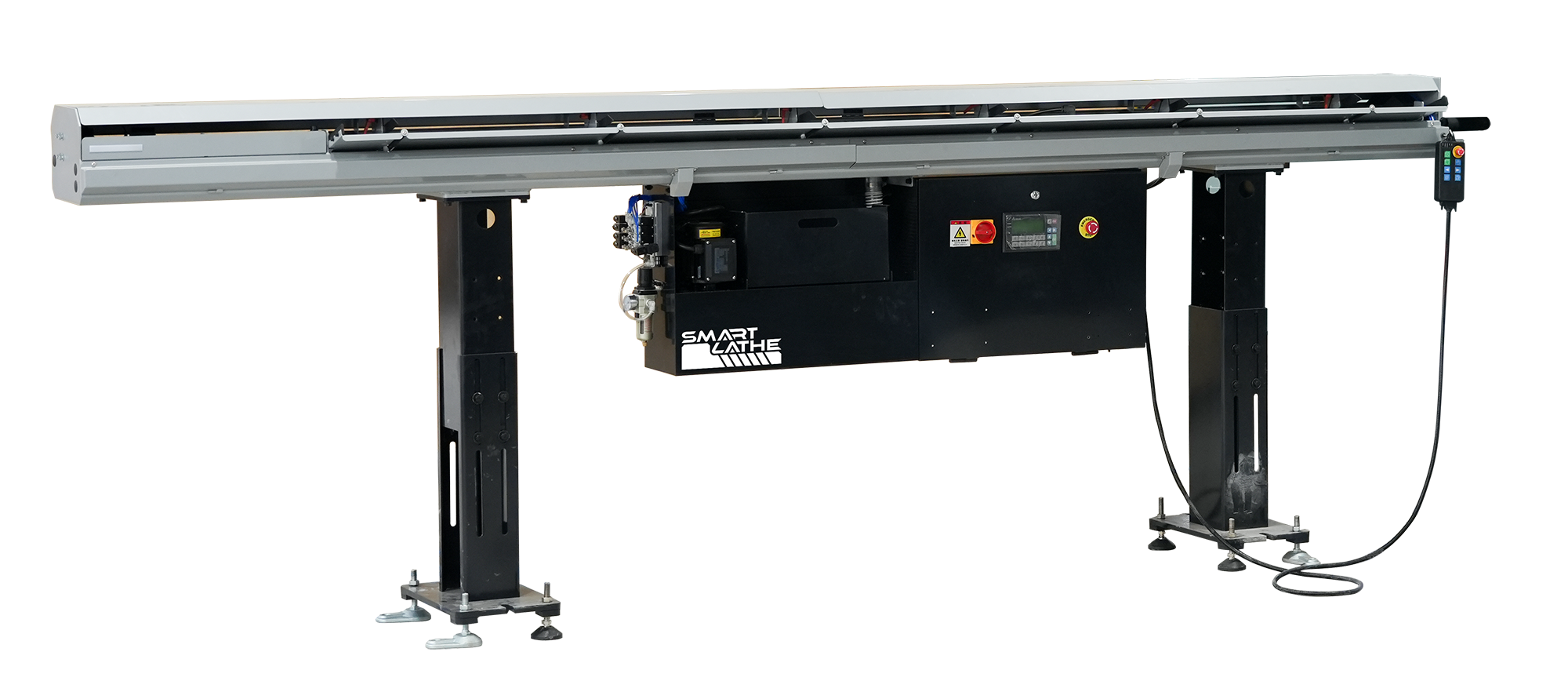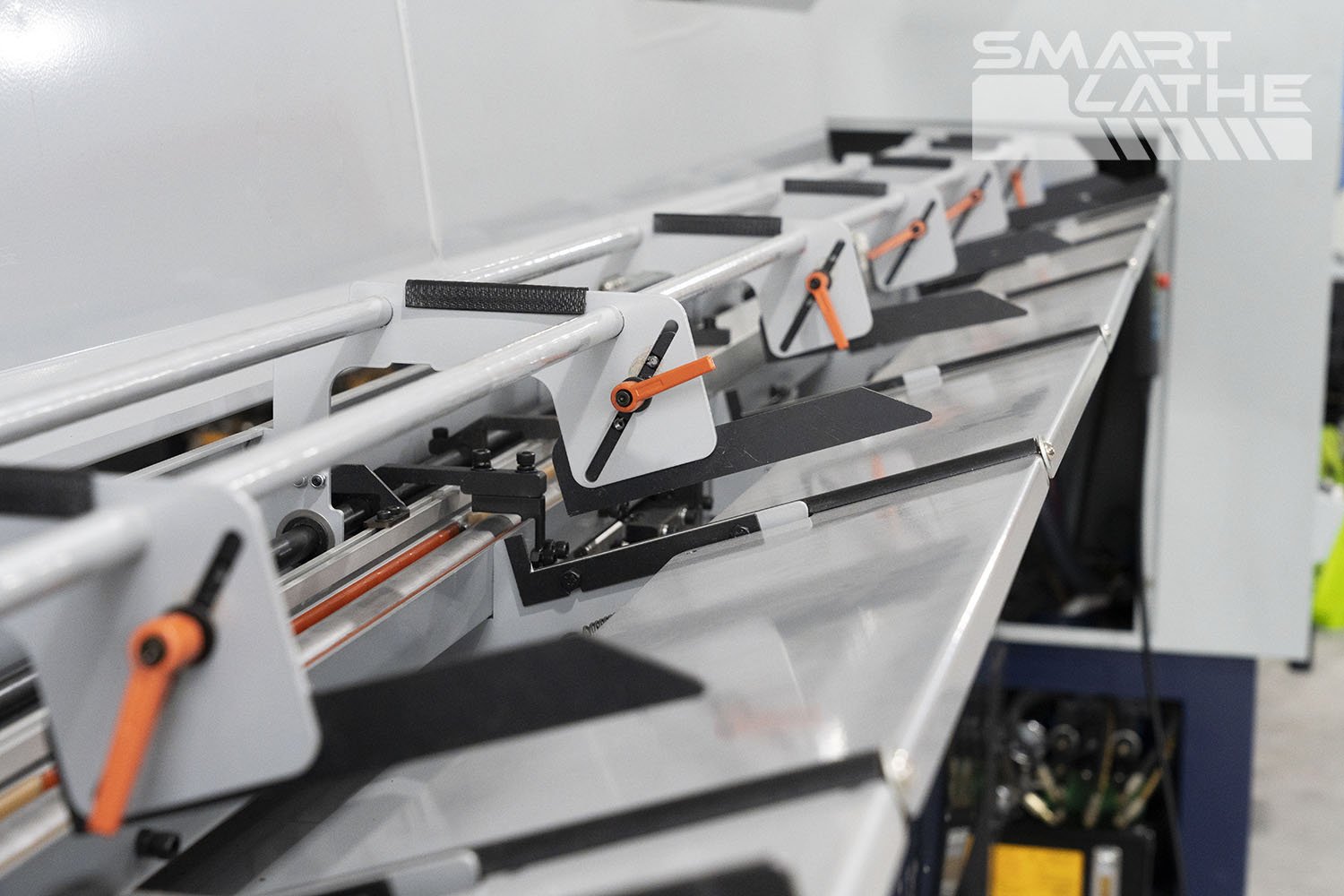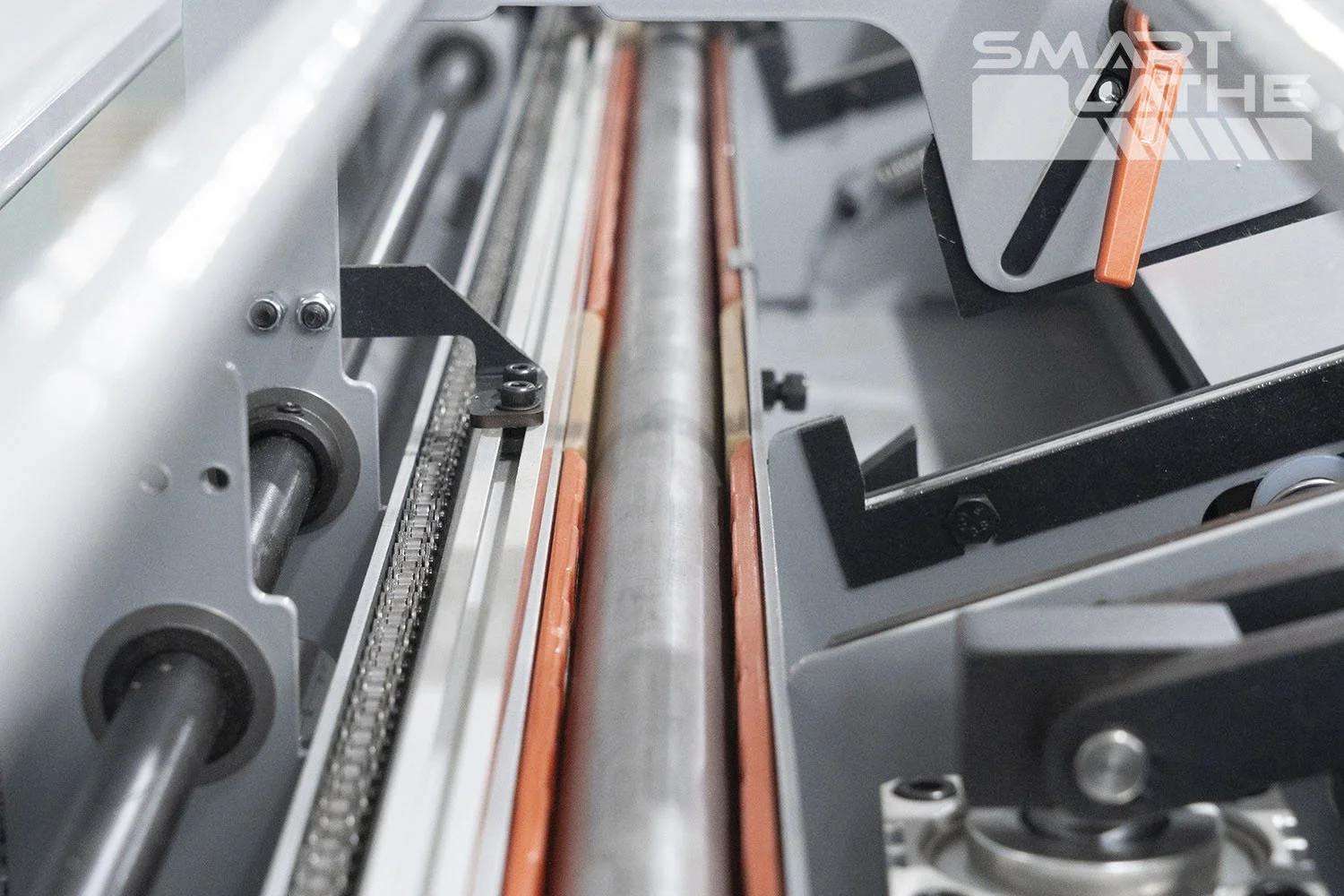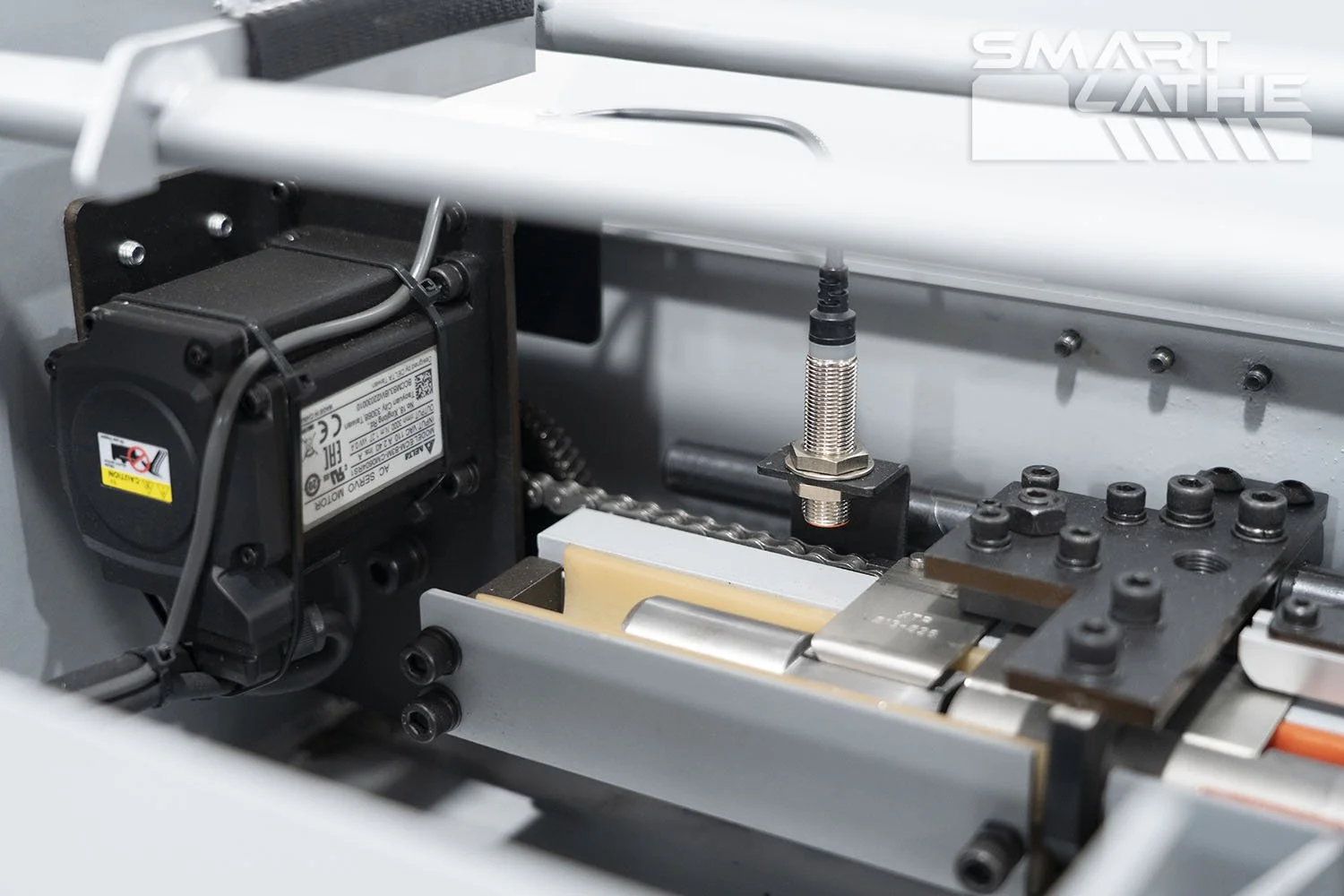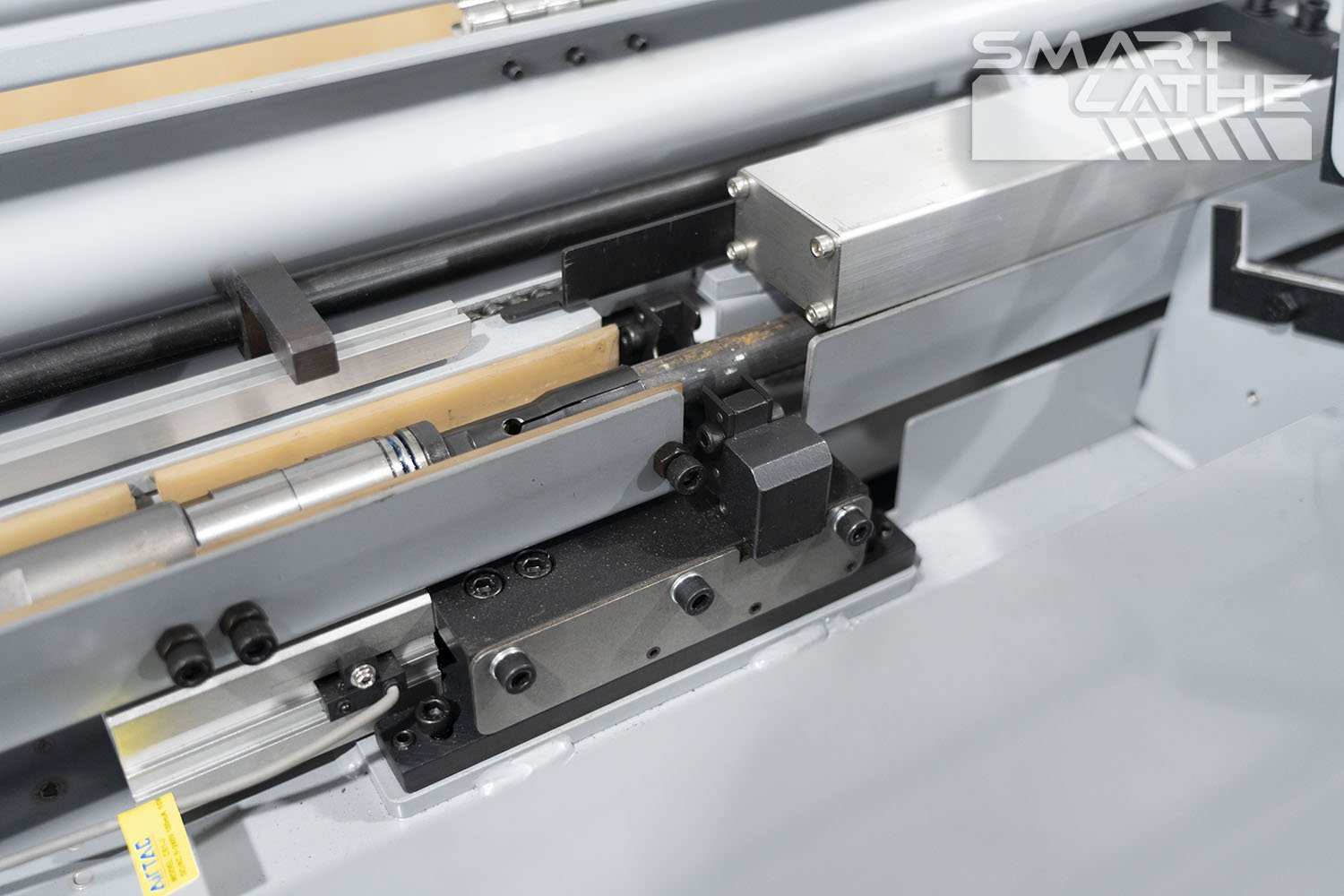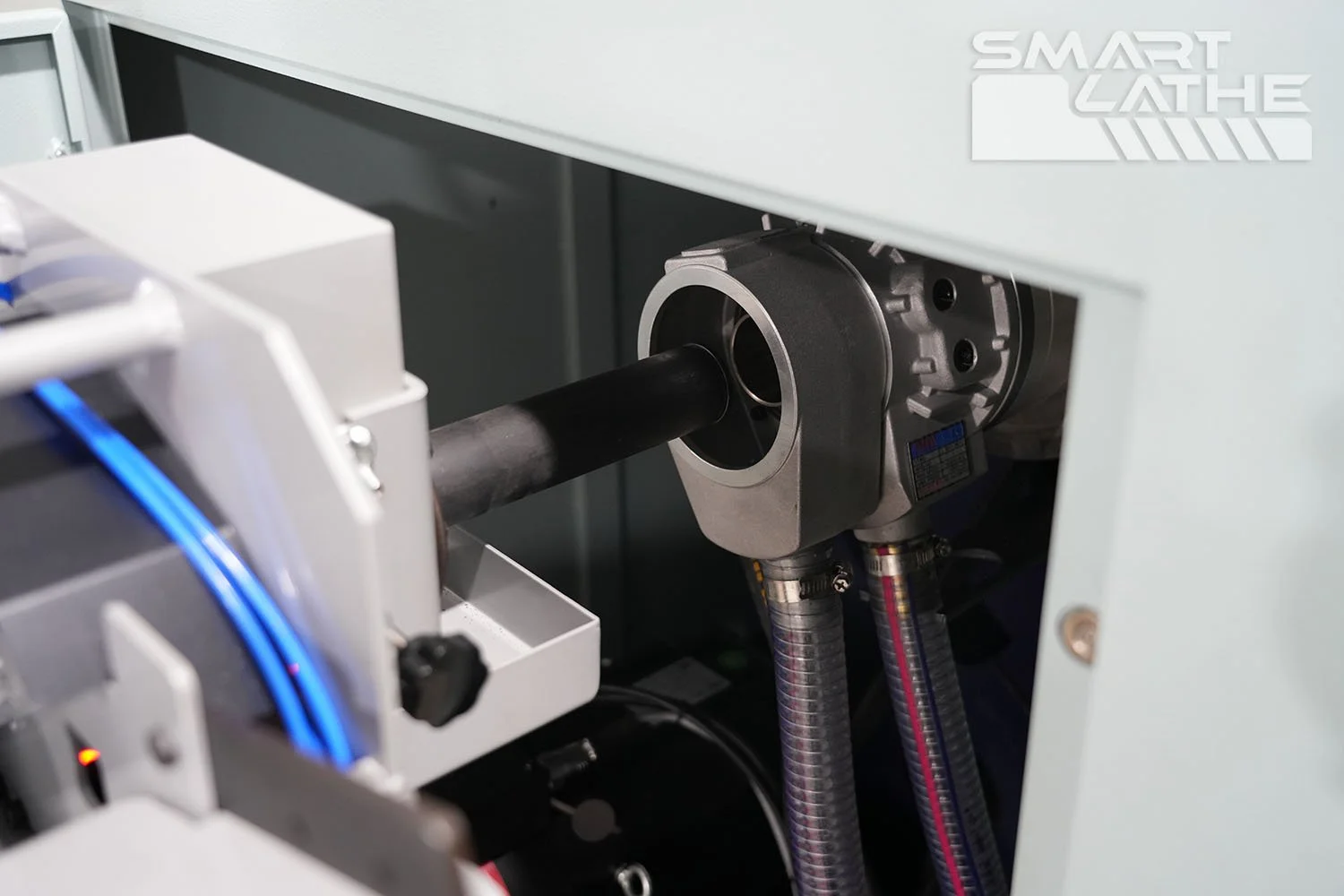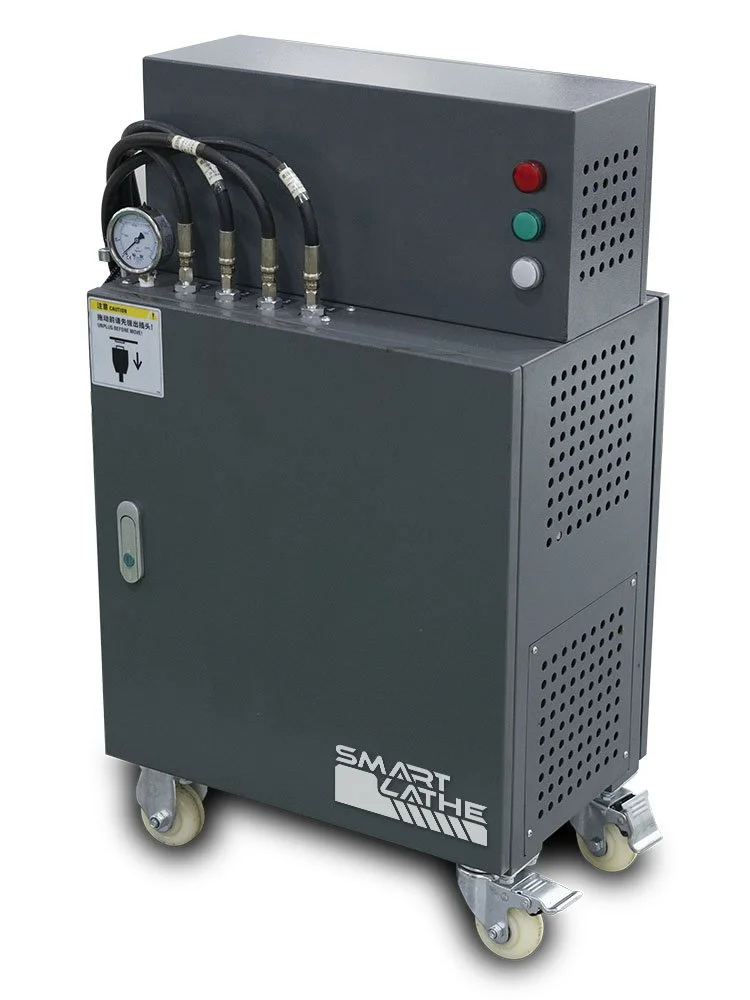The Introduction of The Auxiliary for CNC Lathe Machine
The optional auxiliary for a CNC lathe can vary depending on the specific machine and its configuration. However, some common optional auxiliaries that can be added to a CNC lathe for enhanced functionality and capabilities include:
Bar feeder: A bar feeder is a device that automatically feeds bars of material into the CNC lathe for continuous machining. It typically consists of a magazine that holds multiple bars of material, a mechanism to feed the bars one at a time into the lathe's spindle, and sensors to detect bar presence and positioning. Bar feeders are commonly used in high-volume production environments where uninterrupted material feeding is essential for efficiency. Here's a general overview of how a bar feeder works:
-Magazine: The bar feeder typically includes a magazine that holds multiple bars of material. The magazine can have various configurations, such as a single-tube or multi-tube design, depending on the specific bar feeder model.
-Bar loading: The bars of material are loaded into the magazine, either manually or with the help of an automatic loading mechanism, such as a bar loader or a robotic arm. The bars are typically positioned in the magazine in a way that allows them to be sequentially fed into the lathe's spindle.
-Feeding mechanism: The bar feeder has a feeding mechanism that moves the bars of material one at a time from the magazine into the lathe's spindle. The feeding mechanism can use different methods, such as pusher fingers, grippers, or collets, to grip and feed the bars.
-Bar positioning: The bar feeder typically includes sensors or mechanisms to accurately position the bar of material before it is fed into the lathe's spindle. This can ensure precise bar positioning and alignment for accurate machining.
-Bar feeding: Once the bar of material is properly positioned, the feeding mechanism moves the bar into the lathe's spindle, where it is clamped by the lathe's chuck or collet. The lathe's spindle then rotates the bar, allowing for machining operations, such as turning, facing, drilling, or threading, to be performed.
-Continuous operation: As the CNC lathe machines the bar of material, the bar feeder can automatically feed the next bar from the magazine, allowing for continuous operation without the need for manual reloading of material. This can significantly improve productivity, especially in high-volume production environments.
-Bar remnant removal: Once the machining operations are completed on a bar, the bar remnant or "cutoff" is typically removed from the lathe's spindle using a cutoff mechanism, such as a cutoff tool or a parting-off tool. The bar remnant can then be collected or discharged, depending on the specific bar feeder design.
Bar feeders are commonly used in CNC lathe applications where continuous machining of long bars of material is required, such as in high-volume production of small parts or components. They can help improve productivity, reduce material waste, and minimize manual handling of material, making them valuable optional auxiliary for CNC lathes. It's important to note that the specific features, capabilities, and operation of a bar feeder may vary depending on the manufacturer and model, and it's recommended to consult the machine's documentation or contact the manufacturer for detailed information on a specific bar feeder.
Chip conveyor: A chip conveyor is a system that automatically removes chips and debris generated during the CNC lathe's machining process. It typically includes a conveyor belt or auger that collects chips from the work area and transports them to a designated collection point or bin. Chip conveyors help keep the work area clean, reduce manual labor for chip removal, and prevent chips from interfering with the machining process. Here's a general overview of how a chip conveyor works:
-Chip collection: During the machining process, chips and other debris are generated as a result of cutting, drilling, or other operations. The chip conveyor collects these chips from the machining area, typically using a combination of scrapers, brushes, or augers.
-Chip transport: Once collected, the chips are transported along the chip conveyor by a conveyor belt, auger, or other means. The conveyor system is typically designed to transport the chips away from the machining area, preventing them from accumulating and interfering with the machining process.
-Chip separation: In some chip conveyor systems, chips may be separated from coolant or other fluids used during the machining process. This can be achieved using filters, screens, or centrifuges, allowing the coolant or other fluids to be recirculated or properly disposed of, while the chips are collected for disposal or recycling.
-Chip storage and disposal: The chips collected by the chip conveyor are typically collected in a chip bin or a hopper for storage or disposal. The chip bin or hopper may be integrated into the chip conveyor system or positioned separately for easy access and removal of the chips for disposal or recycling.
-Continuous operation: The chip conveyor operates continuously during the machining process, collecting and transporting chips away from the machining area, allowing for uninterrupted operation of the CNC lathe.
-Maintenance and safety: Chip conveyors may require periodic maintenance, such as cleaning, inspection, or replacement of worn components, to ensure their proper operation. It's important to follow proper maintenance procedures and safety guidelines provided by the manufacturer to ensure safe and efficient operation of the chip conveyor.
Tool presetter: A tool presetter is a device used to measure and set tool offsets outside of the CNC lathe. It typically consists of a measuring probe, a touch screen or control panel, and software that communicates with the CNC control. Operators can measure and set tool offsets on the presetter, which can then be input into the CNC control for precise tool positioning during machining. Tool presetters help reduce setup time and improve machining accuracy.
Live tooling: Live tooling is a feature that allows a CNC lathe to perform milling, drilling, or other operations in addition to turning. It typically involves the addition of a tool turret or tool changer that holds live tools, which are driven by the lathe's spindle motor. Live tooling enables the CNC lathe to perform multiple operations without the need for tool changes, increasing versatility and reducing cycle time.
Automatic part catcher: An automatic part catcher is a mechanism that catches finished parts as they are machined and automatically removes them from the CNC lathe. It may involve the use of grippers, chutes, or other devices to catch and remove finished parts from the lathe’s work area safely and reliably. Automatic part catchers improve productivity by reducing the need for manual part handling and allow for uninterrupted machining.
Programmable tailstock: A programmable tailstock is a tailstock that can be controlled by the CNC system, allowing for automated movement and positioning. It may include features such as programmable movement, clamping, and unclamping, as well as position feedback to the CNC control. Programmable tailstocks provide greater flexibility in workpiece support and positioning, particularly for long workpieces or those requiring precise tailstock movement.
High-pressure coolant system: A high-pressure coolant system is a system that delivers a continuous stream of coolant at high pressure to the cutting zone during the machining process. It typically involves a pump, hoses, and nozzles that deliver the coolant directly to the cutting tool, improving chip evacuation, reducing tool wear, and improving surface finish. High-pressure coolant systems are commonly used in applications where effective chip evacuation and cooling are critical, such as in machining hard materials or achieving high-quality surface finishes.
It's important to note that the availability, features, and specifications of these optional auxiliaries may vary depending on the specific CNC lathe model, manufacturer, and configuration. It's recommended to consult the machine's documentation or contact the manufacturer for detailed information on the specific auxiliaries available for a particular CNC lathe.

